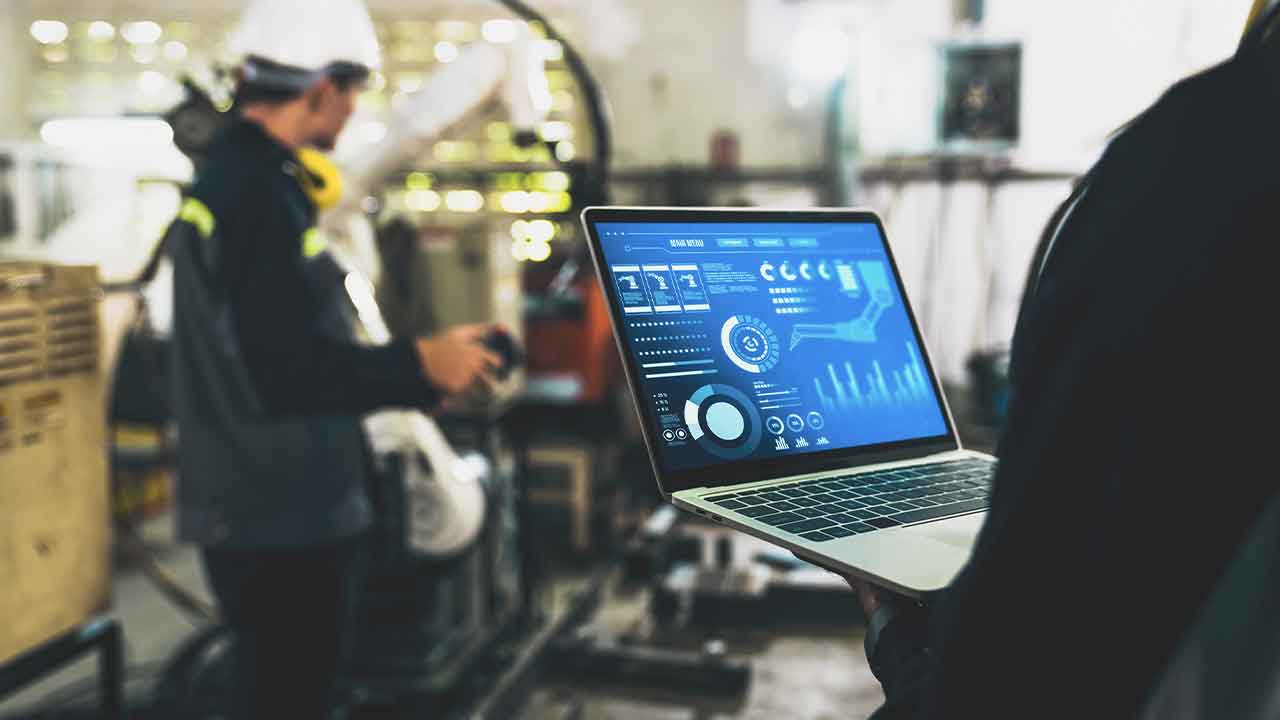How IIoT enables the factory of the future
Trillion-dollar projections on the expanding size of the market are urging companies to capitalize on the Industrial IoT (IIoT). For many, however, it remains unclear how factories should apply IIoT to begin making the hyper-efficient and agile factory of the future a reality.
As the Fourth Industrial Revolution transforms manufacturing and material handling, enterprises continue to look for ways to create value from converging technologies.
But what are the steps that companies need to take to put together an effective agenda of action?
Future factory concept in IIoT
The future factory is the way the industry is implementing smart technologies that bring together machine, people and products to communicate and interact in order to increase their productivity.
I find it essential that the implementation of the industrial internet is incorporated into the company’s strategy and business development. In other words, chief executives must embrace change. In order to advance decision-making on the correct level, CEOs must be included from the very beginning, possibly as the initiative main sponsor. IT officers alone cannot drive real digital transformation.
To initiate the transformation of IoT in the mafucaturing industry, manufacturers have to define a specific set of goals, to be assessed and validated initially on a pilot project, before the implementation at scale of an end-to-end Industrial IoT solution. The next step is to deploy an industrial internet pilot in one facility, or on a specific production line, which will be used as a case study for learning how IoT works in this particular industrial environment. The pilot facility is then reworked and developed according to observations. After the test phase, it is easy for a company to apply the same principles, with proper adjustments, at scale to other facilities.
The Future of IIoT
It is easier to justify large investments in future industrial internet in environments where industrial internet is incorporated into production by transitioning directly to automated, advanced IIoT environments. The transition phase is less complicated when the existing infrastructure is light, because there are fewer things that must be accounted for in applying new solutions.
A case in point is Romania, where the internet infrastructure is now top of the class in Europe. The Romanian infrastructure was created rather recently compared to more affluent European countries, and therefore, the entire web is more modern than that in Finland, for example.
Industrial internet in practice
Applications of IoT in manufacturing are already a reality. There are dozens of different use cases of IIoT in enterprises. Companies are developing IoT applications that work, and they have started making a difference. For example, transportation and warehousing benefit from automated vehicles and asset tracking. In manufacturing, predictive maintenance (PdM) and asset performance management (APM]) are key areas where industrial internet boosts value creation.
Source: Momenta Partners White Paper – Realizing the Opportunity in Predictive Maintenance Analytics – August 17, 2017
Predictive maintenance keeps assets up and running, decreasing operational costs and saving companies millions of dollars. Data streaming from sensors and devices can be used to quickly assess current conditions, recognize warning signs, deliver alerts and automatically trigger appropriate maintenance processes. IIoT coupled with AI or ML thus turns maintenance into a dynamic, rapid and automated task.
Other potential advantages include increased equipment lifetime, increased plant safety and fewer accidents with a negative impact on the environment.
The importance of edge analytics
Companies have been proactive in moving the processing of IIoT to cloud services. However, it is not necessarily a wise move to have everything in the cloud. During critical stages of the manufacturing process it is crucial that decisions can be made instantaneously. Here, manufacturers can benefit from edge analytics.
Edge computing enables real-time analytics. Edge analytics is an approach to data collection and analysis where automated analytical computation is performed on data at a sensor, network switch or another device instead of waiting for the data to be sent back to a centralized data store. IIoT can be supplemented with Arduino-based, open-source computer hardware and software applications that allow some of the processing to take place on site, at the edge of the network and near the source of the data. Edge computing has many benefits and it helps ensure that the right processing takes place at the right time, in the right place.
Edge computing is a preferable option for the cloud in terms of security, as proprietary data is kept within the company firewall. Moreover, edge computing becomes vital when you need real-time analysis and automated action to save critical-mission production lines or facilities from potential heavy damages.
Creating future value with IIoT
There’s no value in the data without advanced algorithms of machine learning. Value can be created in surprisingly simple ways by putting data to work. Peloton Tech’s truck platooning system is a case study that illustrates how IIoT is already creating value. The system uses vehicle-to-vehicle communication to connect the braking and acceleration between two trucks. The lead truck controls the simultaneous acceleration and braking of the whole fleet, reacting faster than a human or even a sensor system could. What follows is a reduction in aerodynamic drag, which leads to companies saving around seven per cent in fuel cost. In terms of annual savings, this is a remarkable number.
How Should Businesses Prepare for the Future of IIoT?
In Europe, trucking companies such as Scania and Volvo Trucks have adopted IIoT fleet thinking. It still takes courage to adopt innovations like these. Companies should start seeing emerging technology like Industrial IoT not as a threat but as the only way to survive in the future. That’s two or three years if you are an optimist, five to ten if you are more conservative.
The simple capacity of devices to seize data is not what the Industrial Internet of Things is essentially about. Even if you have all the infrastructure and the technology to get the data – sensors, WiFi, the gateway, the cloud – and the capacity of analyzing the data, there’s no value in it without AI, more specifically advanced algorithms of machine learning.
Future IIoT is about AI or ML analyzing data in real time so as to make decisions and act, most of the times several days or even weeks before a potential issue. This process results in actual business outcomes. Prescriptive analytics react autonomously, real-time: In a mission-critical situation, a prescriptive system will autonomously decide what to do. This is where edge analytics is imperative.
My point is: You can’t consider industrial internet standalone. The real value comes from how companies use AI and ML-enabled IIoT solutions in analyzing and processing data. For an in-depth overview, check BTS of IIoT Revolution: The Storage Technology that Drives it.
FAQs about the IIoT Future:
What are the trends of IIoT in 2024 and beyond?
In 2024 and beyond, IIoT (Industrial Internet of Things) is expected to see trends like increased adoption of edge computing, enhanced cybersecurity measures, integration of AI and machine learning, expansion of 5G networks, and a focus on sustainability and green technologies.
What is the next big thing in IIoT?
The next big thing in IIoT is likely to be the convergence of technologies like AI, 5G, and edge computing. This will enable real-time data processing, advanced analytics, and autonomous decision-making capabilities within industrial settings.
How is IIoT changing the future?
IIoT is fundamentally changing the future by revolutionizing industrial operations. It’s enabling predictive maintenance, optimizing resource utilization, increasing automation, and providing valuable insights for data-driven decision-making. This leads to more efficient, sustainable, and competitive industries.
Where do you see IIoT in 5 years?
In five years, IIoT is anticipated to be even more integrated into industrial processes. It will likely play a central role in smart factories, logistics, energy management, and various other industries. The ecosystem will be more mature, with standardized protocols and a wide range of interoperable devices and platforms.
Fabio Bottacci works as an independent advisor. He is founder and CEO of VINCI Digital and an Industrial IoT Expert Contributor at the World Economic Forum and at BNDES, the Brazilian Development Bank. The article is a modified version of an interview originally published here.
works as an independent advisor. He is founder and CEO of VINCI Digital and an Industrial IoT Expert Contributor at the World Economic Forum and at BNDES, the Brazilian Development Bank. The article is a modified version of an interview originally published here.



